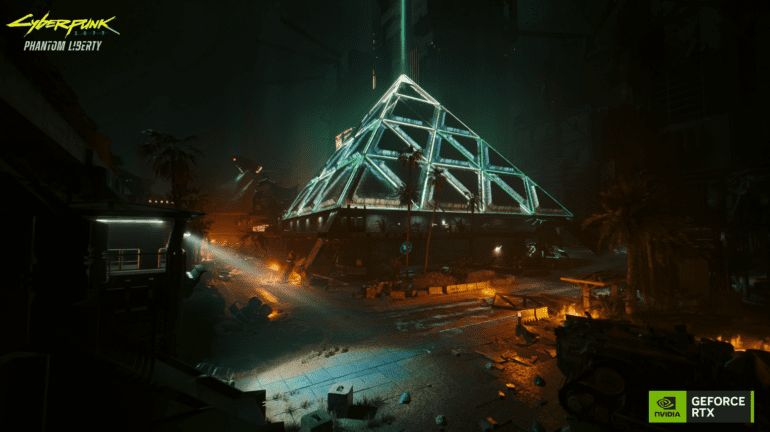TL;DR:
- NVIDIA introduces DLSS 3.5 at Gamescom, following DLSS 3’s frame interpolation release.
- DLSS 3.5 unveils Ray Reconstruction, enhancing ray traced image quality via AI neural network.
- Ray Reconstruction is accessible across all RTX GPUs, replacing traditional denoisers.
- DLSS 3.5 showcases sharper reflections and textures in supported game titles.
- Cyberpunk 2077 achieves 108fps in Overdrive Mode with DLSS 3.5 and Ray Reconstruction.
- Developers are required to integrate support for Ray Reconstruction in their games.
- Cyberpunk 2077, Portal RTX, and Alan Wake 2 are among the first DLSS 3.5 titles.
Main AI News:
In a move that continues to push the boundaries of gaming graphics, NVIDIA has unveiled the latest iteration of its Deep Learning Super Sampling (DLSS) technology, version 3.5. This comes hot on the heels of DLSS 3’s introduction, which brought frame interpolation into the gaming landscape by leveraging AI-driven rendering acceleration to insert additional frames into gameplay. Now, at the prestigious Gamescom event, NVIDIA is taking it a step further with DLSS 3.5, introducing a groundbreaking feature known as Ray Reconstruction.
Ray Reconstruction represents a pivotal leap in enhancing the visual fidelity of ray traced images. This innovation leverages the formidable capabilities of NVIDIA’s neural network to elevate the quality of ray traced visuals to unprecedented levels. Unlike its predecessor DLSS 3, which was limited to RTX 40-series cards, DLSS 3.5 and its Ray Reconstruction feature will be accessible across all RTX GPUs.
NVIDIA’s strategic shift involves replacing conventional “hand-tuned denoisers” with an AI network of immense sophistication, honed by the power of NVIDIA’s supercomputing resources. This neural network is engineered to generate pixel-perfect details between sampled rays, seamlessly bridging the gap between realism and computational efficiency. This approach resonates with the original essence of DLSS — the utilization of AI to enhance the appeal of lower-resolution textures — and the ramifications could extend beyond image quality to potentially optimize ray tracing performance.
Demonstrations showcased to the media exhibit the tangible impact of Ray Reconstruction. Sharper reflections and textures, transformative hallmarks of this breakthrough, are vividly showcased in supported titles. This enhancement injects new life into gaming environments, heightening the immersion and realism that modern gamers crave.

Source: Yahoo




Source: Yahoo
Notably, in a testament to DLSS 3.5’s prowess, the highly demanding Cyberpunk 2077 in Overdrive Mode achieved a remarkable 108 frames per second (fps) when paired with Ray Reconstruction, surpassing the previous mark of 100fps with DLSS 3 alone. Comparatively, DLSS 2, lacking Frame Generation, achieved 63fps, while the absence of DLSS assistance plummeted performance to a mere 20fps.
It’s essential to highlight that developers will need to actively integrate support for Ray Reconstruction into their games, mirroring the earlier DLSS releases. Leading the charge, Cyberpunk 2077, accompanied by its expansion Phantom Liberty, will spearhead the DLSS 3.5 lineup, arriving in September. Subsequent titles in the pipeline, such as Portal RTX and Alan Wake 2, will further showcase the capabilities of this cutting-edge technology.
NVIDIA is set to unveil the marvels of Ray Reconstruction at Gamescom, seizing the opportunity to present its potential to the gaming community. As anticipation builds, gamers and tech enthusiasts alike await the chance to witness the future of AI-powered gaming visuals, hoping to catch a glimpse of the breathtaking possibilities that lie ahead.
Conclusion:
NVIDIA’s DLSS 3.5 introduces Ray Reconstruction, revolutionizing ray traced gaming visuals through AI-driven enhancements. This innovation sets a new benchmark for image quality, rendering, and performance optimization in the competitive gaming market. As developers embrace this technology, players can anticipate unprecedented levels of realism and immersion in supported titles, reshaping the landscape of gaming experiences.

